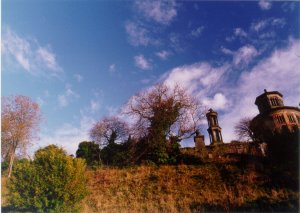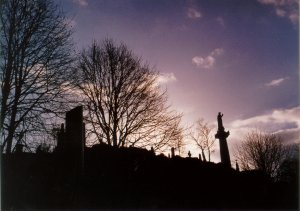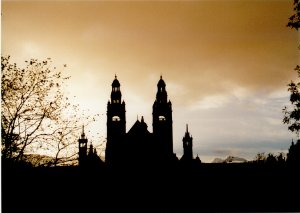Keeping the pier at an angle in the photograph helps create a sense of dynamism. It also brings out the peculiar pattern in the design of the pier.
While shooting a landscape, keep the rule of third in mind. Actually, it's a convention, not a rule. It says that either the land or the sky should occupy 1/3rd of the space in the photograph and the other should occupy 2/3rd. But again, this rule is breakable, as evident in the next picture.




